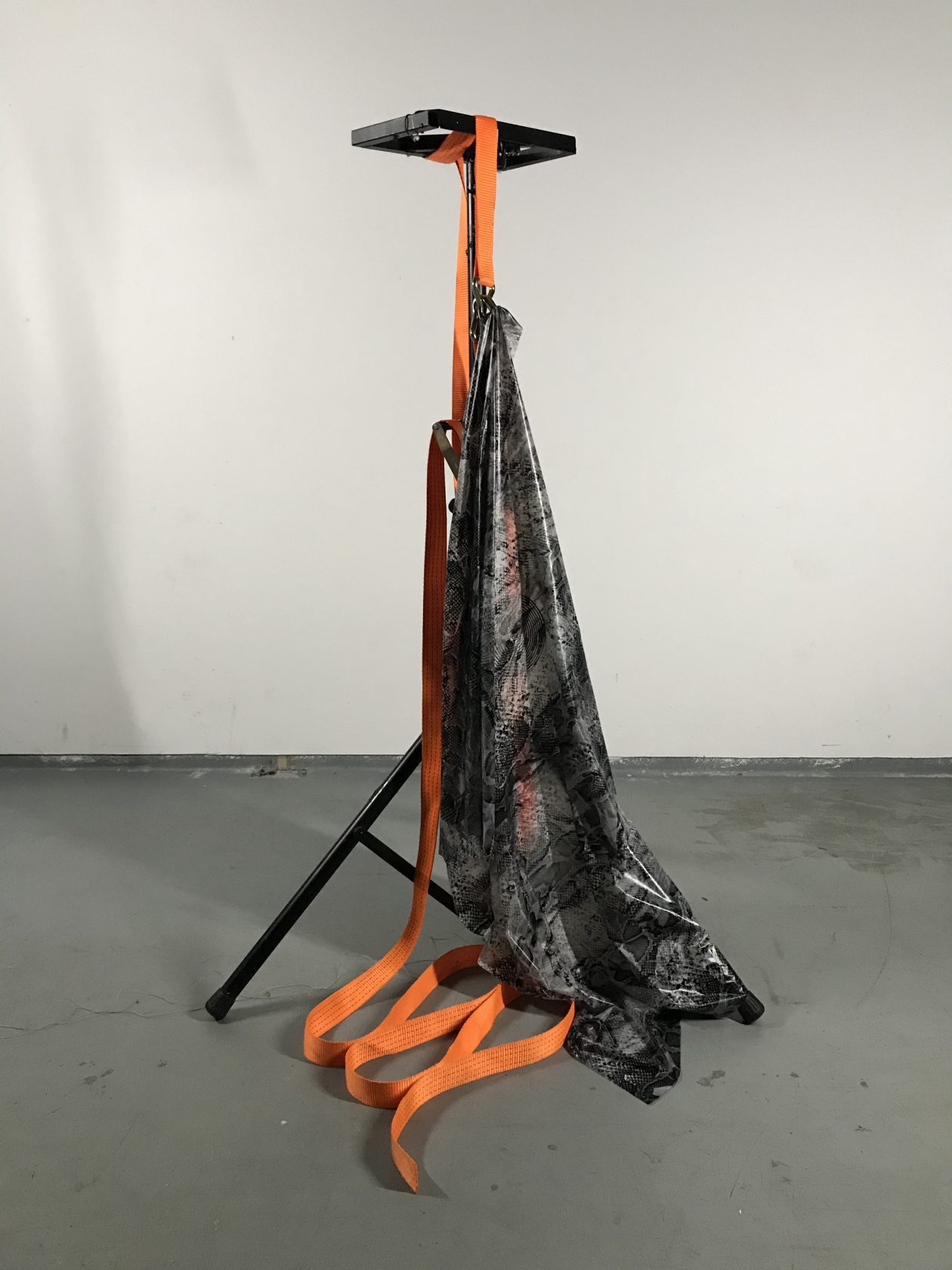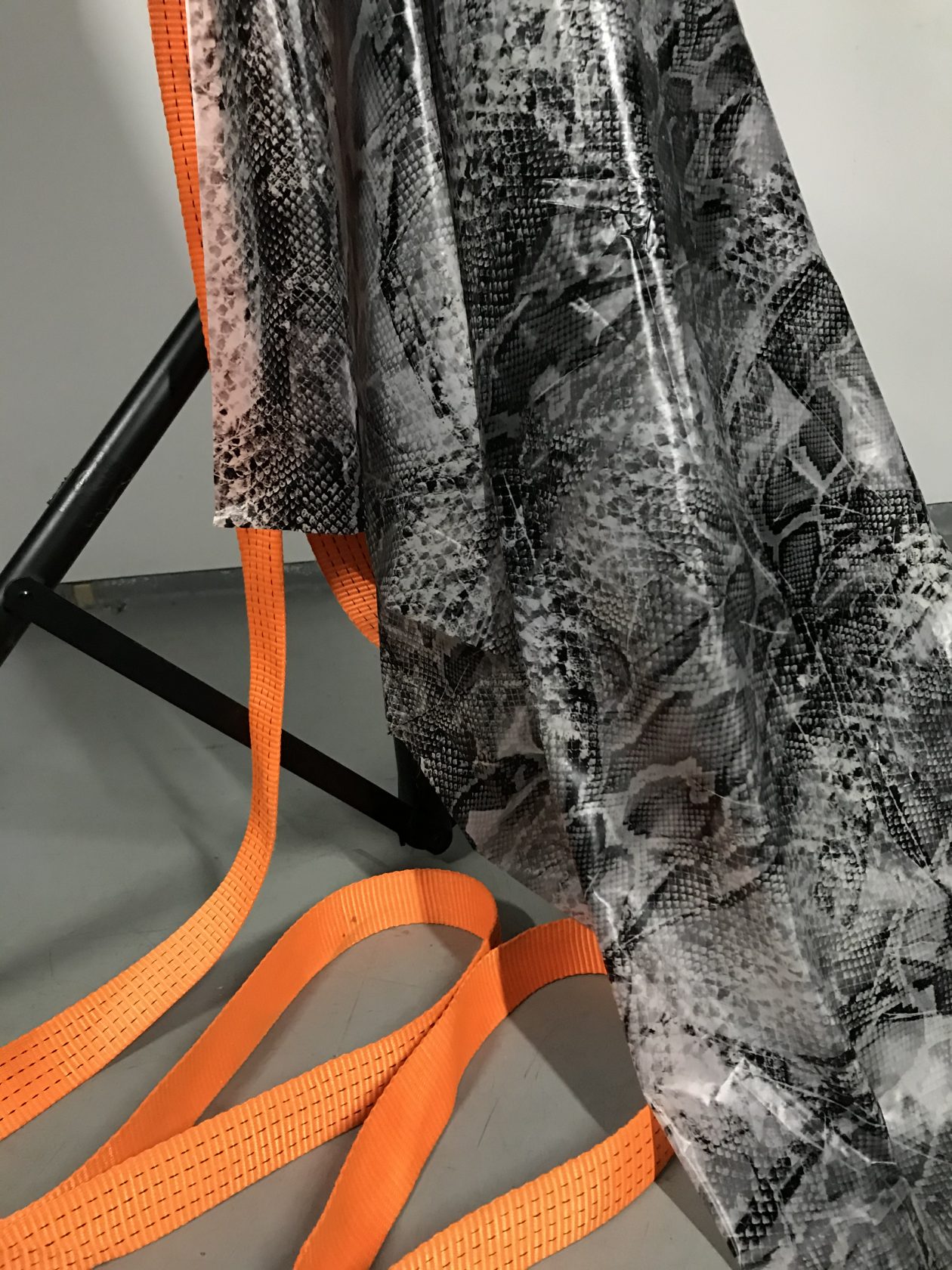Meet iii-residents EJTECH
EJTECH is a Budapest-based experimental, polydisciplinary studio composed of Esteban de la Torre and Judit Eszter Kárpáti. Their work, which uses elements of textile, sound, light, and space, has been exhibited in galleries and institutions around the world. We got together at iii to discuss research interests, upcoming projects and past collaborations.

Cathleen Owens: Could you tell me a bit about EJTECH and its background?
EJTECH: We (Esteban de la Torre and Judit Eszter Kárpáti) met at MOME (Moholy-Nagy University of Art and Design) in Budapest. Judit has a PhD as a textile artist and material researcher, while Esteban is a media and sound artist . Originally we further developed Judit’s master’s project, a sound thermo-reactive textile. Shortly after that, we cofounded our studio, EJTECH (pronounced /’eitech’/), almost six years ago. Our focus since then has been on the relationship between new materiality, technology, and the human body. We investigate concepts such as resonance, vibration, space, time, and ephemerality as building blocks towards a coherent experience of the eternal now.
EJTECH itself is divided into three branches. We have the main branch, which is our artistic research, where we do all of our exhibitions, performances, and installations. The other two branches are commissioned work and the democratization of knowledge, via workshops and academic courses.

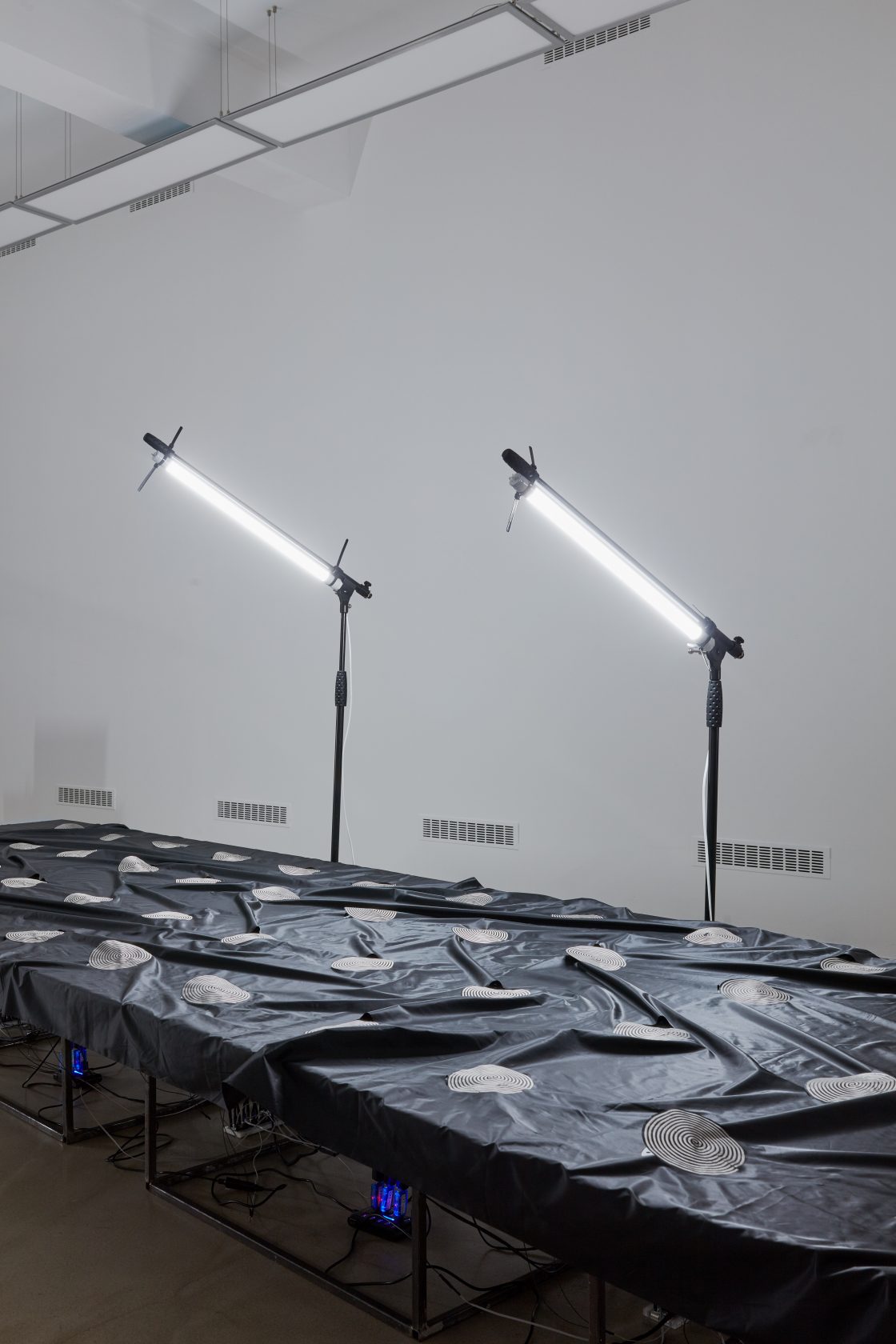
EJTECH presents itself as a branch of techno-spiritualism. How do you define this in relation to your work?
We define it as the unearthing of a new spirituality that is intrinsically connected to a new materialism. As a civilization, we are taught that there is some distant deity that is watching remotely over us and that middlemen in between; a priest, a rabbi or a shaman are more closely connected to this deity. In reality, this divinity is contained in everything. Everything is right here within us, everywhere around us. Techno-spiritualism is inner engineering. When we are working with vibrating textiles, it’s not only the audio experience via the ear canal but also the corporal experience of sound. When the entire room is vibrating in sync with your body, you are the room and the room is you. There is a broadening of self. When you are alone in such space, the space itself folds into an intimate exploration on materiality, into self, through all that which is around us. For example, our work Sensorivm is a participatory performance/installation, based on people who are tangible interactions during the exhibition ritual. Participants investigate materials through sound, by exploring different surfaces and structures via touch. By uncovering an extra hidden dimension that was already there, in the material, by augmenting it via technology, making it visible, it becomes apparent that materiality is not only skin deep, but goes much deeper. It’s the interconnectedness of everything. The macro and the micro cosmos revealed. The string theory. We believe this is why the textile medium is so interesting: textiles themselves are structures of interconnection. It’s a beautiful material to work with, but it’s also a truly awesome metaphor.
How do you decide when a piece is finished?
We aim to breathe life into our work. Our work is liquid hot media, it is in constant change, only existing on the verge of disappearing. We don’t believe in creating a rigid dead piece to hang with a nail on a wall. We aim to create an environment for it to exist. It has a life of its own, like a creature. As an example, one of the latest pieces we installed was a five-channel sound system with conch shell synthesizers. When you walk into the space, you are welcomed by a hanging textile and a sitting conch. It won’t vibrate into life until the visitor interacts and explores the augmented conch and its protruding knobs. The art piece is finalized once it’s set up, but as a dormant until, and only “wakes up” while the experiencer experiences it. We aim to breathe life into our work, towards an organic, creature-like, which has a life in itself.
What interests you about textiles? In quarantine, have you noticed a change in our relationship with the fabrics around us?
Textiles are the smallest habitats. They act like membranes. Membranes can separate you or involve you in something. Textiles aren’t just home textiles or clothes but you can think of them in a totally different way. Textile wraps around you just like the universe wraps around you. When it comes to the experience of reality, it is interwoven with sensorial experiences. It becomes a fabric you create from your experiences, your sensorial system, how it’s interacting with the outside world. Textile is one of the most important building elements, besides wood or stone. It can give you a totally different somatic experience. Besides that, textiles are excellent modes of knowledge, but these bits of knowledge are understood as a perceptual experience. Textile is a very nice metaphor to describe our work. For example, we use many expressions that are very much connected to textile but are used in our everyday life. The fabric of reality, for example.
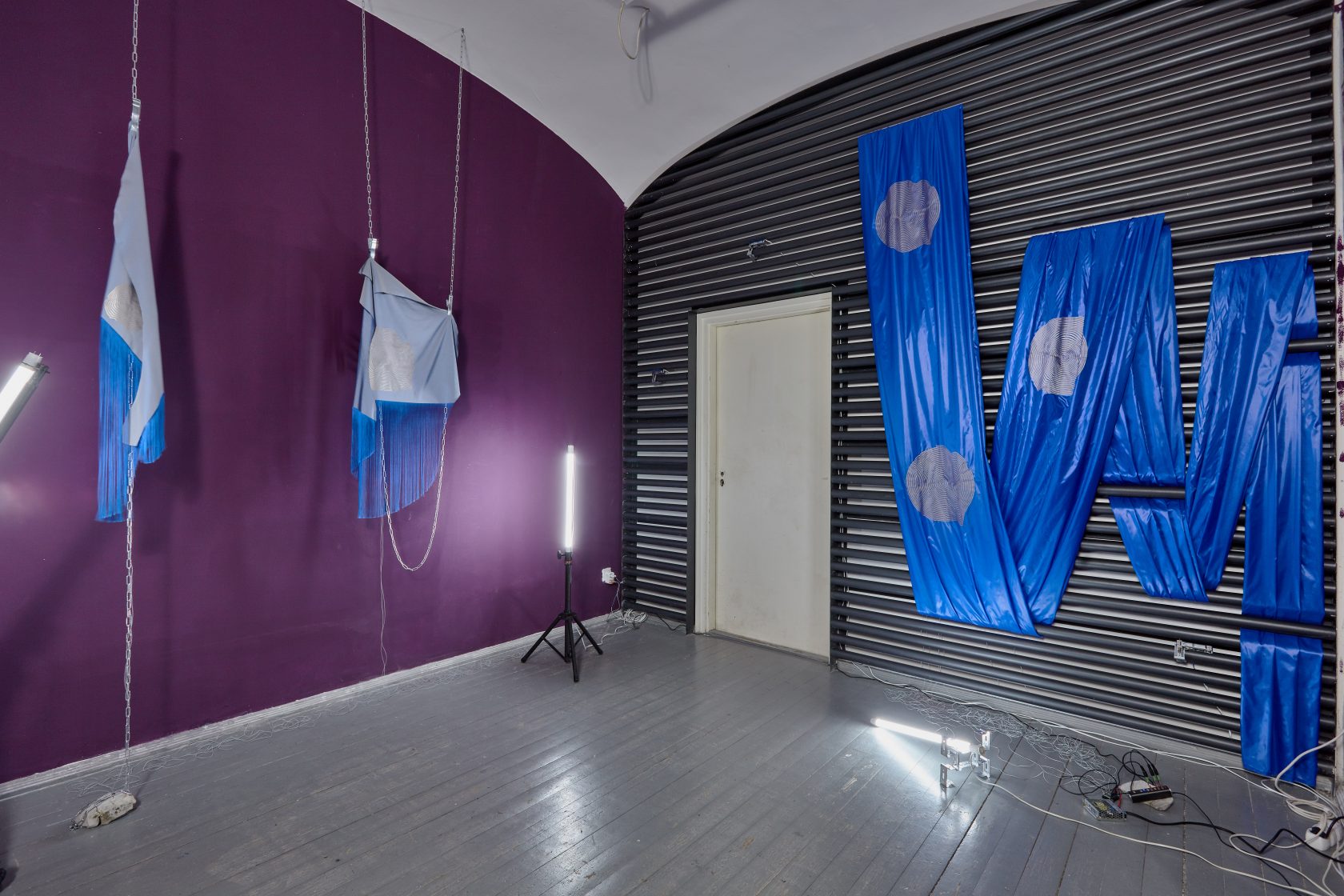
Did you begin Chromosonic thinking of your work as an installation?
Chromosonic is about the exponential overgrowth of digitalization in our lives and how we can augment the screen into the physical area, ultimately replacing the screen as such. Using screen printed linen with thermochromic dye, we connected electricity into the fabric, creating a soft interface that responds to heat energy, visualizing auditory phenomena. Originally we created an art installation but it still holds possibilities for further research. We have already produced commercial commissions using this technology. For us, Chromosonic began an entire branch of research studying textiles as storing information devices and dynamic surfaces for data display.
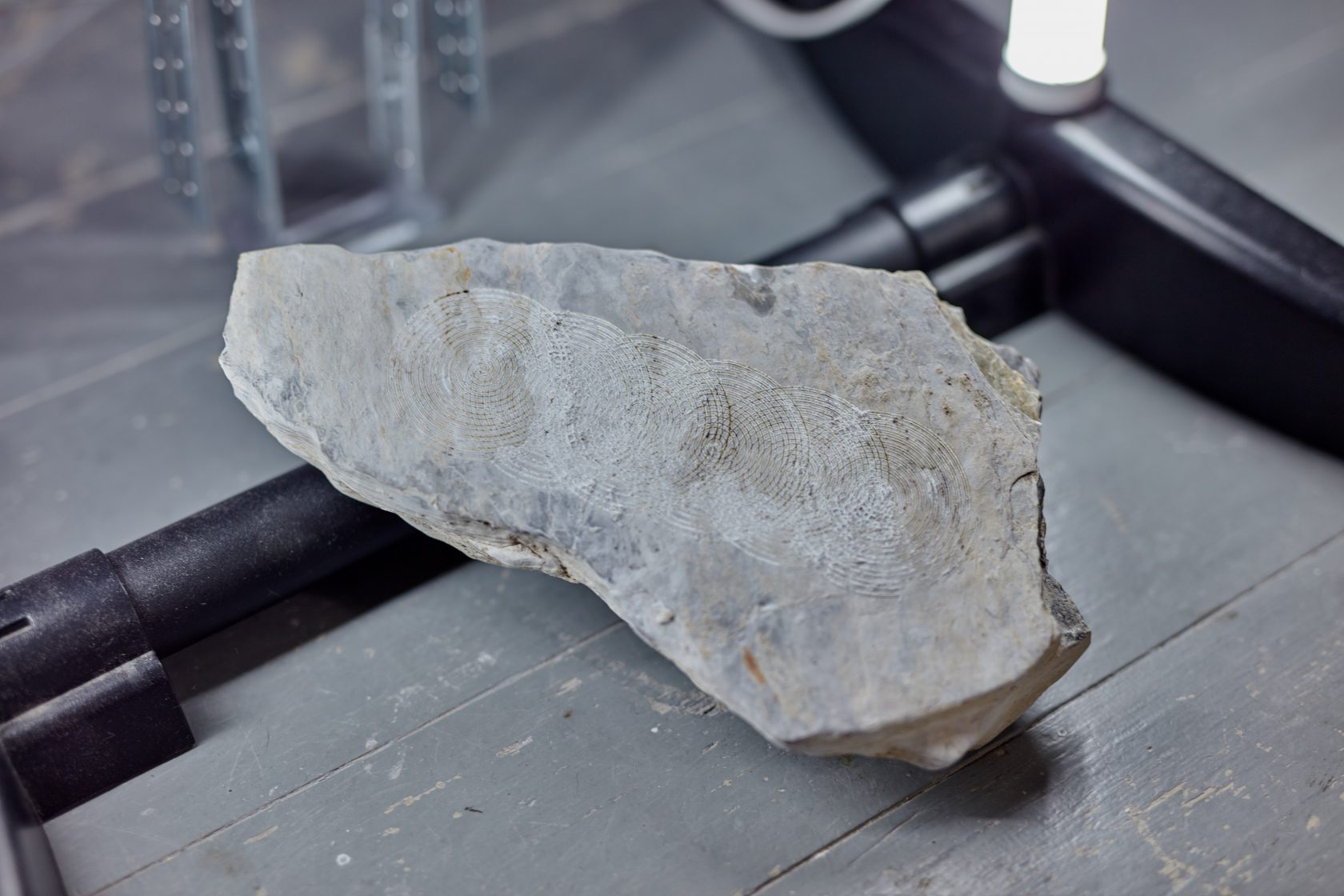
The audience could see your work in the movie Blade Runner 2049. How did you first get involved and what was your role?
A few emails and a non-disclosure agreement later, we were called in to sit down with Renée April, the film’s costume designer. We created embedded electronics, soft-circuitry, and specialized props for the costume department. Los Angeles 2049 is drenched in acid rain and dipped in fog. We were inspired by bioluminescence in deep-sea creatures and we were strictly asked not to use any LEDs. We proposed ideas, they worked on a very strict aesthetic. We were one cog in a gigantic machine. A beautiful experience.

You recently collaborated with Dior on the AirDior sneakers. How was working for such a huge brand?
The House of Dior first reached out to us a couple of years ago. When the AirDiors, a collaboration between AirJordan and Dior was to be released, they thought it would be a good moment to experiment and push the edge a bit. It was a challenging concept, they wanted to highlight the very impressive Italian handmade detail put into the sneaker pair for the release as an interactive installation and performance. All technology was to be invisible and wireless. We augmented each sneaker with six haute couture entirely custom-built sensors. The craftwork put into this sneaker pair is incredible. Via interaction, during the worldwide drop, you could control a generative beatscape, as well as an engulfing light sculpture. It was poetic to have such a giant trust us and tell us to “do our thing”.
How do accessibility and education play a role in your work?
We regularly give workshops in both academic and non-academic environments. The focus of our workshops is on the interdisciplinary element. In academic scenes, we try to aim for our participants to be students from different departments. We love to have people from various backgrounds so that they can collaborate with each other – media artists with textile artists, graphic designers with product designers. We have also given workshops for children. In this case, it’s not really about them learning the actual process but just plugging stuff in and allowing them to play with the technology in a creative way. We teach, but we also learn a lot in return. Many perspectives will come up, which you wouldn’t have framed on your own.
Is there a specific way you want the viewer to interact with your work? A certain amount of time that they should invest?
Active listening and patient observation. There should be time allowed for things to sink in. When you really observe, or you give in to active listening, just being there, it can become much more engaging and intimate. For instance, with multi-channel spatial sound installations, pacing around can be very important. That really requires a bit of patience, attention. Having said this, we don’t consider our pieces to be a concrete answer or a solid statement but rather a tool to be used in each’s own personal journey. There are no answers.
You work a lot with behavioral patterns and set conditions, how much room do you leave for the unexpected?
The whole process of building a multichannel sound system is very mathematical and calculated. Then again, there are beautiful chances and things that sometimes just happen, which can be positive or not. During the material research, we embrace the failures. Working with textiles and electricity brings a lot of smoke and spontaneous combustion. Sometimes it’s beautiful, sometimes it’s a cause of great stress. It’s a raw media that flops and flips as it pleases.
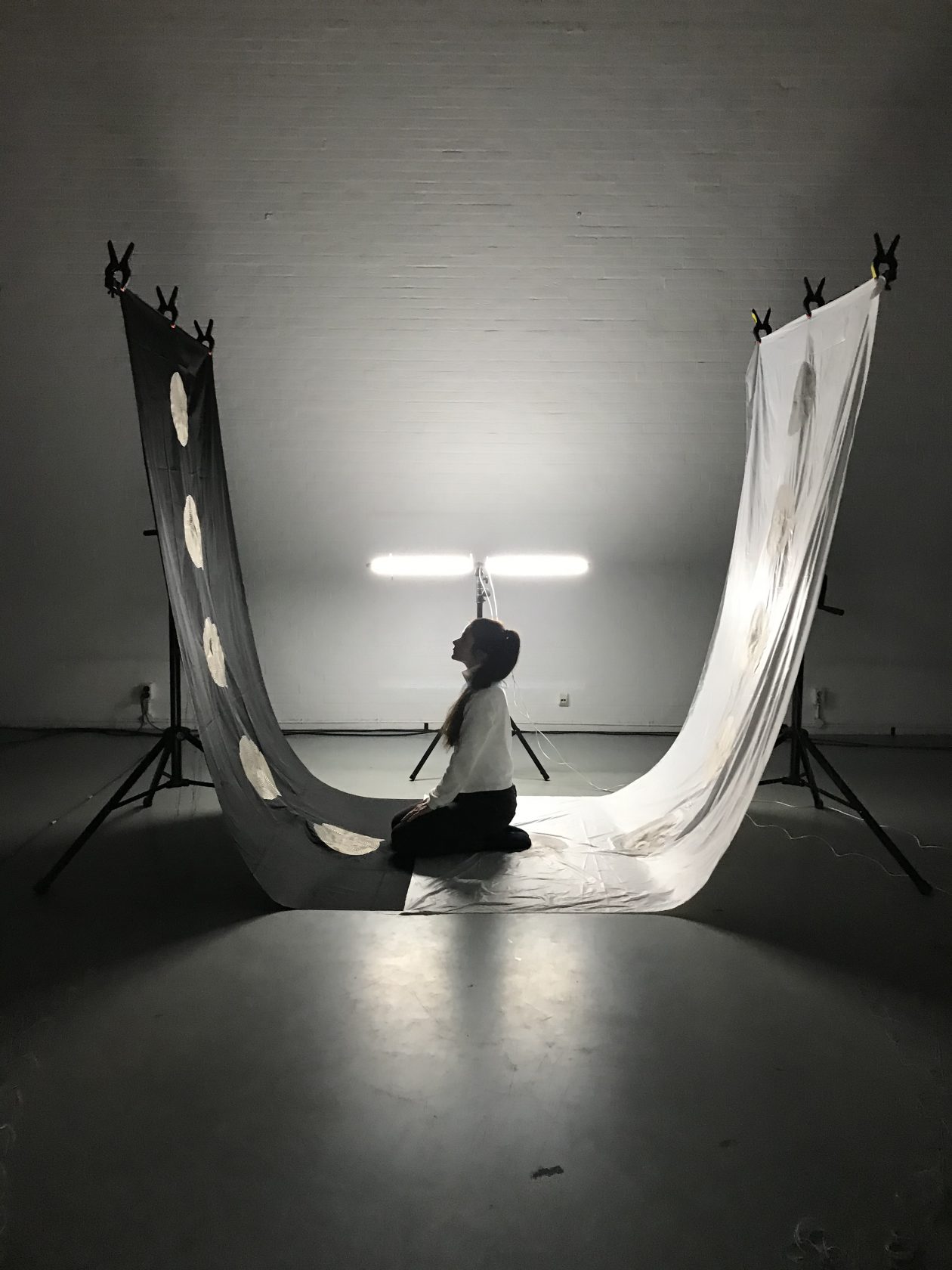
Could you tell me about your workshop at iii?
The workshop called “Skinterfaces” was a daylong introductory workshop to electronic textiles as sensors for beginners. It revolved around augmenting textiles and using them to communicate with your computer. The core concept was to provide the participant with the tools to reach this. The goal was for each participant to embrace these and make them their own. We really wanted to show the strong and unspoken connection between computer science and textiles. Textiles are the original digital medium. We discussed the unspoken legendary heroes: the “L.O.L”.s. The Little Old Ladies working at NASA. The ones weaving the core rope memory that lead mankind towards the stars.
It was interesting to show the participants how broad and beautiful the medium truly is. The next interface for human-computer interaction is textiles, our second skin. Textiles are already playing a big huge in the dehierarchization of the senses. Eyesight, since the Gutenberg revolution, has become our main mode of ingesting information. While very efficient, looking at something is distancing and alienating. Looking at something means experiencing something from afar. But the moment that you hear or touch or smell the experience becomes something within. For example, it is much easier to look at a video of something exploding, compared to listening to it or smelling such an explosion. It is much more of a deeper, lesser filtered experience. That is something we are aiming for, the dehierarchization of the senses. They all should hold the same weight in our experience of reality.
What are you currently working on?
Currently we are working on a new project, General Magic. We consider it the next generation of Chromosonic, investigating textiles as a soft image medium. We are plotting ephemeral traces on textiles, patterns that appear and disappear, like patterns in time. These traces are confined to computer vision while the computer vision is feeding back to the patterns, creating a feedback loop. Our research for this project included the connection between textile and photography as they share similar roots. In early photographic processes, light-sensitive compounds were used for chemical reactions. Instead of a photochemical process, we are examining thermochromic processes in order to create ephemeral, algorithmic, code-based images. It’s basically a painting, painting itself.
What are your plans for the rest of your time here at iii?
We brought textiles and we plan on exploring the space. Our time here is limited so we are carrying out short experiments on textile sound systems, dealing with very specific textile placement, and multichannel sound compositions arranged in various invisible geometric movements. Alongside that, we are also experimenting with placing the textile directly on the skin and draping it on the body, something which we have been wanting to play with for a while.
